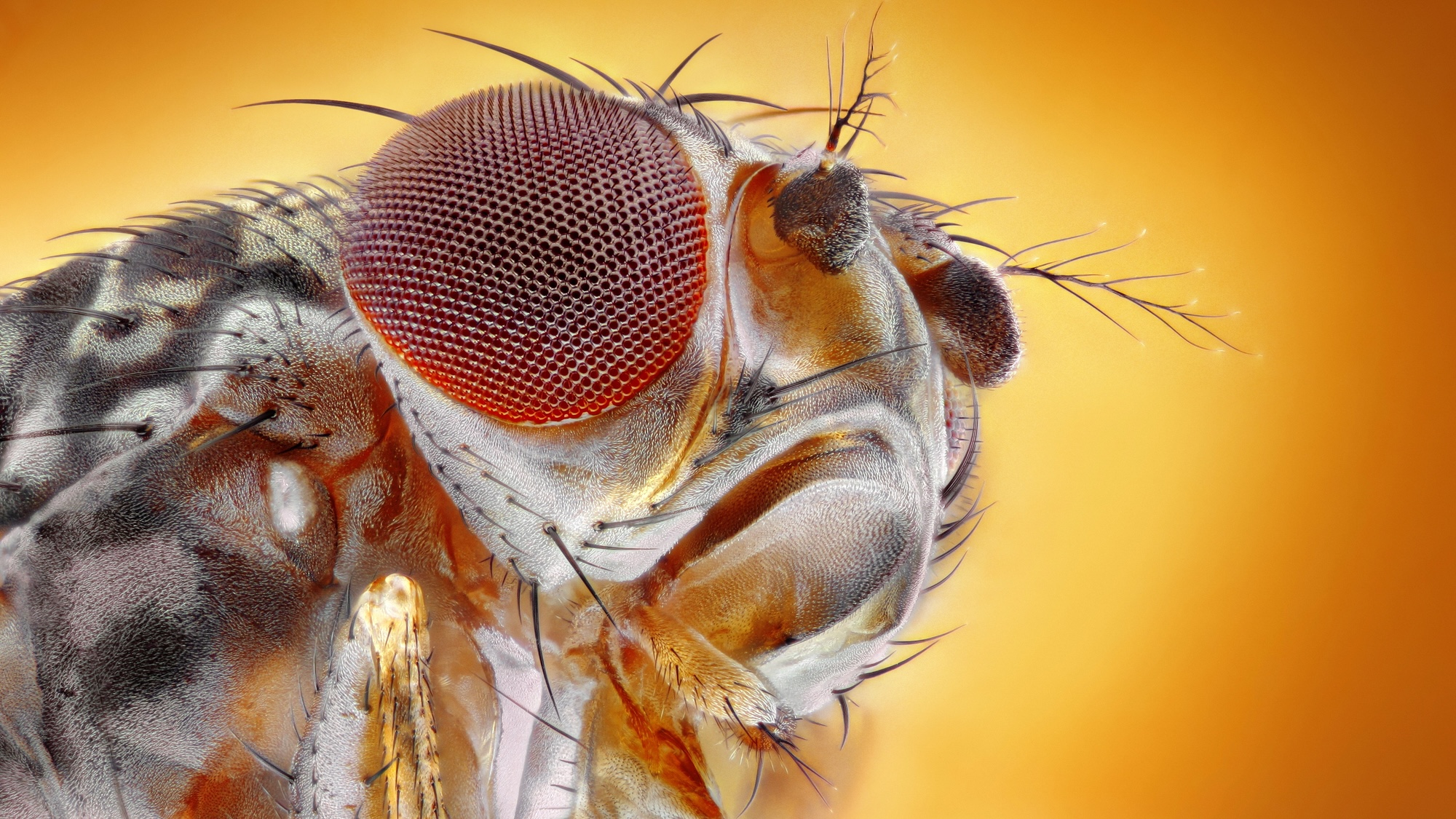
Get the Popular Science daily newsletter💡
Breakthroughs, discoveries, and DIY tips sent every weekday.
In a world first, scientists at the University of Utah have engineered fruit flies susceptible to cocaine addiction. But as strange as it sounds, there are potentially life-saving reasons for genetically altering the insects to crave the drug. The novel biological model could help addiction treatment therapies development and expedite research timelines. The findings are detailed in the Journal of Neuroscience.
As surprising as it may sound, humans have a lot in common with fruit flies. In fact, we share around 70–75 percent of the same genes responsible for various diseases, as well as many of the same vital organs. Researchers have relied on the insects for genetic studies for years, especially for investigating the biological roots of certain addictions like cocaine abuse. This is due in large part to the fruit fly’s quick life cycle and its comparatively simple genetic makeup. But while scientists have administered the drug to the bugs in the past, there’s always been a small problem.
“Flies don’t like cocaine one bit,” Adrian Rothenfluh, the study’s senior author and an associate professor of psychiatry, said in a statement.
Even when previously introduced to cocaine, Rothenfluh’s team noted that the insects routinely opted for pure sugar water over sugar water laced with cocaine. Study first author Travis Philyaw theorized the reason may reside in a fly’s sense of taste that is found on their legs.
“Insects are evolutionarily primed to avoid plant toxins, and cocaine is a plant toxin,” Philyaw explained. “They have taste receptors on their ‘arms’—their tarsal segments—so they can put their hand in something before it goes in their mouth, and decide, ‘I’m not going to touch that.’”
After confirming that cocaine activates a fruit fly’s bitter-sensing taste receptors, Rothenfluh and Philyaw switched off those nerves. Once deactivated, there was little to stop the flies from developing a cocaine habit. These modified flies were subsequently introduced to sugar water infused with a low concentration of cocaine. Within 16 hours, the insects indicated a preference for the drug-laced drink.
“At low doses, they start running around, just like people,” said Rothenfluh. “At very high doses, they get incapacitated, which is also true in people.”
Now that researchers know how to breed the modified fruit flies, they can more easily study how cocaine addiction evolves in the body. Not only that, but they can do so on a much faster timeline by analyzing hundreds of genes at a time.
“We can scale research so quickly in flies,” said Philyaw. “We can identify risk genes that might be difficult to uncover in more complex organisms, and then we pass that information to researchers who work with mammalian models.”
From there, scientists can identify treatment targets that help link to human therapy options.
“We can really start to understand the mechanisms of cocaine choice, and the more you understand about the mechanism, the more you have a chance to find a therapeutic that might act on that mechanism,” explained Rothenfluh.

More deals, reviews, and buying guides
The PopSci team has tested hundreds of products and spent thousands of hours trying to find the best gear and gadgets you can buy.























